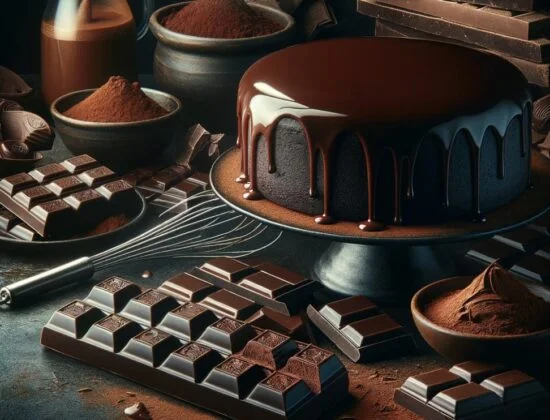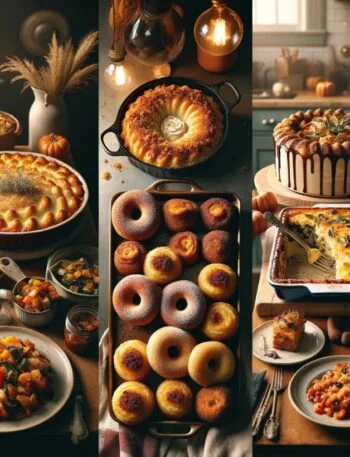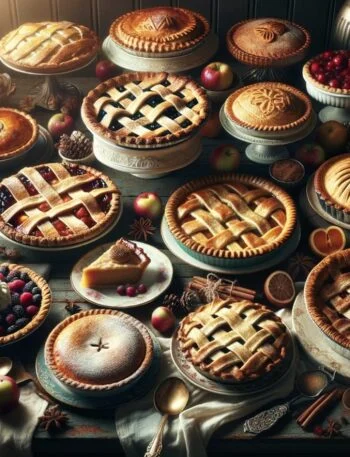Unveiling the Sweet Secret of Baking with Chocolate
Chocolate, with its rich history and complex flavor profile, is a cornerstone ingredient in the world of baking. From the darkest bittersweet to the creamiest milk chocolate, each variety offers a unique potential to elevate desserts from ordinary to extraordinary. This guide aims to demystify the process of selecting and using different types of chocolate in baking, ensuring every chocolate-infused creation is as decadent as intended.
The allure of chocolate transcends cultures and generations, making it a universal language of love, comfort, and celebration. In baking, chocolate is not just an ingredient; it’s a medium through which bakers express creativity, passion, and skill. Understanding the nuances of chocolate can transform your baking, infusing your desserts with unparalleled depth, complexity, and richness.
The Types of Chocolate in Baking
Before diving into recipes, it’s crucial to understand the different types of chocolate available and how they impact the flavor and texture of desserts:
- Unsweetened Chocolate: The purest form of chocolate, containing 100% cocoa solids. It’s intense and bitter, used primarily in recipes where sugar is added separately.
- Bittersweet and Semisweet Chocolate: These chocolates contain cocoa solids and sugar, with bittersweet having less sugar and more cocoa. They’re versatile, ideal for both melting and chopping into chunks.
- Milk Chocolate: Known for its creamy texture and sweet, mild flavor, milk chocolate adds a subtle chocolate taste and is perfect for lighter desserts.
- White Chocolate: Although not chocolate in the traditional sense (as it contains no cocoa solids), white chocolate offers a sweet, creamy flavor that pairs beautifully with fruits and nuts.
Mastering the Art of Melting Chocolate
Melting chocolate is a fundamental skill in baking, whether for ganaches, glazes, or incorporating into batters. The key to perfectly melted chocolate is gentle heat. A double boiler or a microwave at low power ensures the chocolate melts evenly without burning. Stirring frequently and using a dry, clean utensil will prevent the chocolate from seizing.

Selecting the Right Chocolate for Your Recipe
The choice of chocolate can make or break a dessert. For intense, rich creations like truffles or chocolate ganache tarts, opt for bittersweet or semisweet chocolate. Milk chocolate is excellent for treats where a softer, smoother chocolate flavor is desired, such as in chocolate chip cookies or brownies. White chocolate, with its sweet profile, is ideal for balancing tart fruit flavors in desserts like raspberry white chocolate cheesecake.
Innovative Ways to Incorporate Chocolate
Beyond the classic chocolate desserts, there are endless possibilities for incorporating chocolate into your baking:
- Chocolate Infusions: Melt chocolate into creams or milks to create chocolate-infused pastry creams or icings.
- Chocolate Decorations: Use tempered chocolate to create stunning, glossy decorations that add a touch of elegance to any dessert.
- Flavor Pairings: Experiment with unusual flavor pairings, such as chocolate and chili, to add an unexpected twist to traditional recipes.
Baking with chocolate is an adventure in flavor, texture, and creativity. Whether you’re a novice baker or a seasoned pastry chef, understanding and experimenting with different types of chocolate can elevate your desserts to new heights. Embrace the versatility of chocolate in your baking repertoire, and let your culinary imagination lead the way to delicious discoveries.
Remember, the best chocolate desserts start with high-quality chocolate, so choose your ingredients wisely and let the magic of chocolate shine in your baking.






